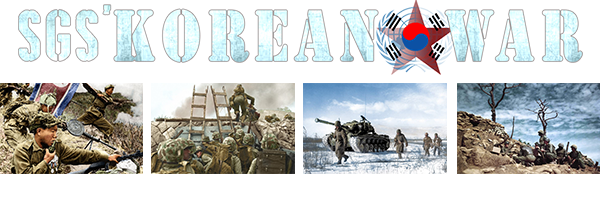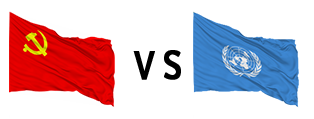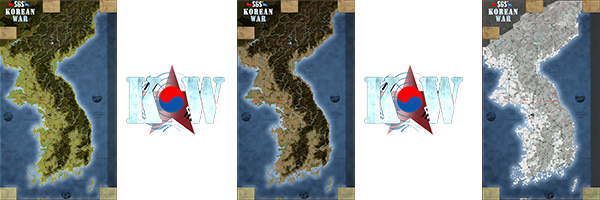SGS Korean War
Game Stats
SGS Korean War streams
Frequently Asked Questions
What is the story of SGS Korean War?
Where can I download SGS Korean War?
Where can I buy SGS Korean War?
How many GB is SGS Korean War?
What languages does SGS Korean War support?
Is there multiplayer in SGS Korean War?
When is SGS Korean War coming out?
Who is the publisher of the game?
Who is the developer of the game?
About Game
The Korean War
This war is remembered as the first intense conflict of the Cold War, but usually not much more than that.
Few know that the conflict’s first year was a very rapid and dynamic Blitkrieg-like struggle, with the North sudden invasion at the beginning of summer 1950 and the counter-offensive from the United Nations in Fall and early Winter, followed by the intense counter-offensive led by Communist China in winter and spring of the following year. Then after this active phase, the mobile aspect of the war was obliterated in memories by months of stagnation and tense struggles alongside a rarely fluctuating line of fortified positions, reminding many of the trench warfare of the Great War. The ‘hot” part of the conflict finally ceased in 1953 with an armistice, but officially the war has not ended. 
The Scenarios
The goal of the game is to recreate the different phases of the war, either in a complete grand campaign covering the whole actual duration, or in shorter scenarios set at different starting points, such as:
• Chosin Scenario: a 3-turns scenario on the infamous battles around Chosin reservoir in Winter 1950
• Incheon Scenario: a 4-turns scenario of the landing at Inchon and subsequent liberation of Seoul, Fall 1950
• Pusan Perimeter scenario: a 4-turns scenario covering the final NK attempt to conquer all of Korea, Summer 1950
• Spring Offensive scenario: a 4-turns scenario covering the Chinese offensive against Seoul in 1951.
• Invasion of South Korea Campaign: a short 3 months (12 turns) campaign covering the initial North Korean invasion, early Summer 1950
• Naktong Campaign: a short 2 months (9 turns) campaign covering the Battle for the Pusan Perimeter, Summer 1950
• Across the 38th Parallel Campaign: a short 4 months (16 turns) campaign covering the UN counter-offensive, from Fall 1950
• China Enters Campaign: a medium 6 months (25 turns) campaign covering the Chinese intervention from Late 1950
• The 1951 Campaign: a medium 24 months campaign (100 turns) covering the war from Spring 1951.
• The 1952 Campaign: a medium 12 months campaign (50 turns) covering the war from Spring 1952.
• The Korean War Grand Campaign: the whole war (150 turns), from June 1950 till the end.
All turns in the various scenarios and campaigns above represent one week, between 26 June 1950 and 15 May 1953. 
One player represents the North Korean and Chinese Communist armies, with Soviet backup, and the other plays the United Nations, comprising South Koreans, UNO, Commonwealth and American forces.
- The Communists have very numerous land forces at the start of the game, and the Chinese reinforcements are impressive, but they are lacking strength in the air (except when the Migs arrive).
- The South Korean player must first hold desperately against the initial invasion, waiting for American reinforcements to alter the course of events. Their aerial superiority and economic might are important and can compensate for the lower numbers.
Scale
The game scale is at the regimental level for land units of both sides, with smaller units (e.g. armor bataillons, UN contingents, partisants) beign also present. Air units are in the form of squadrons. Naval units are present, although most are abstracted at Task Force groups levels (as the war at sea was too much one-sided to be of sufficient interest in our game besides logistical and naval support aspects). Other items such as fortifications, minefields, HQ’s, logistical depots or vehicles, or even industrial infrastructures (to cover the strategic warfare aspects) are also present in good numbers.
The map covers all of Korea, from the border with China and the Soviet Union till the southern Straits of Korea and Japan. All natural types of terrain of the peninsula are present, as well as a new model of weather system, showing map changes when it rains or snows, and with the relevant impact on military operations.
Players and Sides
Players will not only enter detailed military operations and battles (both on land and in the air) but also join in the political and diplomatic aspects of the war, with most of those being handled through the play of cards or via the occurrence of events.
In the military field, you have to handle troop movements and maneuvers, organization of air, HQ and artillery supports, breathroughs, exploitations, build-up of logistical networks or fortified lines. Strategic bombing of the Communist industrial and transportation base is also present, as well as popular resistance, training of troops, recompletion of forces, management of unit rotation or partisan warfare.
As the United Nations, the uncertainty as to when Chinese intervention will occur in the game (an almost certain outcome, but at an unknown date… yet) will be a decisive factor for your military campaign but also for the decisions you can take in politics (shall MacArthur retain command?) or dipliomacy (shall we accept help from Nationalist China?). On the Communist side, the amount and blatancy of Soviet support, as well as Mao’s implication in the conflict are tools at your disposal.
Also, the grand campaign offers option to explore various opening moves and states: what-if the North (or the South) was better prepared, or the USAF ready to jump-in, or extensive fortifications built alongside the 38th Parallel.
All of this is for you to discover in the most detailed recreation of the Korean War to date.
Duration
Variable according to scenarios, from a few hours for the shortest scenarios to 100+ hours for the full war.
Balance
No side is specifically advantaged. Both are playable and enjoyable once you capture the essence of their specific strong points and weaknesses. Detailed scenario information sheets are here to help you get into the game.
System Requirements
Minimum:
- OS: Windows 7/8/10+
- Processor: 2.5 GHz Intel Dual Core
- Memory: 4 GB RAM
- Graphics: 512 MB NVIDIA GeForce 9600 or equivalent
- DirectX: Version 9.0
- Storage: 2 GB available space
- Sound Card: DirectX Compatible
Recommended:
- OS: Windows 7 (SP1+) or higher
- Processor: 2.5 GHz Intel Dual Core
- Memory: 8 GB RAM
- Graphics: 1024 MB DirectX 11 compatible
- DirectX: Version 11
- Storage: 4 GB available space
- Sound Card: DirectX 11+ Compatible
Comments